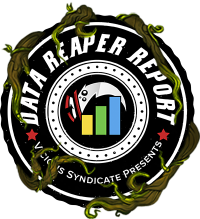
Welcome back to the Wild vS Data Reaper Report! We’re the experts from r/WildHearthstone, and we have partnered with Vicious Syndicate to create the Wild Data Reaper Report. We will be contributing the write-ups and analysis for the report, backed up by the statistics that Vicious Syndicate has become famous for. The data presented in this article is based on 45,000 games.
This report is coming a little bit later in the cycle than usual after the release of Rastakhan’s Rumble due to balance changes involving nerfs to Wild Growth, Nourish, Saronite Chain Gang, Level Up! and Leeching Poison.
With the Wild Open qualification period upon us, we see more people playing the Wild format than ever. Therefore, we encourage you to register to contribute your data to Vicious Syndicate in order to compile more comprehensive reports! Signing up is quick and easy and your contributions are extremely important and much appreciated! Sign up now!
Quick Links
Class/Archetype Distribution | Matchup Winrates | vS Power Rankings | Meta Score | Class Analysis & Decklists | How to Contribute | Credits
Class/Archetype Distribution
[TABS_PRO id=17442]
Priest has overthrown Shaman as the most popular class across lower ranks of play, though Shaman takes back its now-traditional place at the top of the frequency chart from rank 4 to legend.
Rogue’s popularity increases as you climb the ranks, closing in on Shaman at ranks 4-L. Odd Rogue remains the most popular archetype for the class, but we see a jump in play for the newly-revamped Aggro Kingsbane Rogue, which surpasses 5% of the field at the higher bracket. People continue to play Mill variants of Rogue, now returning to the N’Zoth version that relies on multiple N’Zoth’s, Coldlight Oracles, and Deathlords.
Warlock drops to the 4th spot at ranks 4-L, with Reno Warlock remaining the class’ most prevalent archetype. However, unlike previous reports, it’s not a runaway. There is an increase in Cube Warlock and Even Warlock compared to our previous report.
We see a massive increase in the number of Hunters at all ranks, up to 10%, likely due to the class’ popularity and success in standard. From rank 4 to legend, Hunter drops to 7%, with Spell Hunter leading play rates, closely followed by variants of Midrange, Secret, and Mech Hunter.
Mage is seeing a bit of a resurgence in play after the release of Rastakhan’s Rumble. Unlike its standard form, Aluneth Mage has managed to survive without Mana Wyrm. Reno Mages are also around, while Exodia Mage has seen a slight uptick in play after the disappearance of other combo decks in the format.
The Paladin class has dramatically fallen in its play rate, with Odd Paladin’s presence shrinking due to the loss of Level Up. Late-game combo Paladin archetypes have risen in play, gaining a few tools in the form of Time Out and Flash of Light. Aggro Paladin variants have been redefined, with many moving towards the Thekal + Molten Giants package.
Warrior is another class that has received a boost since our last report, primarily thanks to Odd Warrior. We believe that a large proportion of the Odd Warrior increase can be attributed to the cheap transition of the standard deck to Wild, while being able to maintain competitiveness. Of course, Wild Stalwart Pirate Warrior cannot be ignored either.
And then we find Druid, exhibiting the lowest play rate we’ve ever seen from the class. Druid has already been nerfed in Wild due to the change to Aviana, and since December it has had to deal with even more nerfs to core cards, Wild Growth and Nourish.
[TABS_PRO id=17443]

[TABS_PRO id=17444]
vS Meta Score
[TABS_PRO id=17445]
While some things have changed due to the release of Rastakhan’s Rumble and the balance patch, Baku and Genn’s dominance over the format remains untouched. Odd Rogue is at the top of the tier list, thanks to a powerful matchup spread carrying very few weaknesses, with Odd Paladin, Odd Warrior, and Secret Hunter proving to be its biggest counters.
After being discovered as a sleeper deck in our last report, Even Warlock continues to look very strong, dominating Warlock mirrors and carrying an advantage against any deck in the format that relies on early-game initiative. Even Warlock is the Tier 1 deck that beats Tier 1 decks, and its primary weakness is its Priest matchups.
Much like in standard format, Odd Paladin has completely shaken off the loss of Level Up and stays firmly placed in Tier 1 thanks to its strong performance against the two powerful Rogue archetypes, which are very popular on ladder right now.
Making massive moves up the tier list is Cube Warlock, jumping to Tier 1 after looking lukewarm in our last report. With several late-game strategies disappearing, Cube Warlock has become extremely effective at pressuring the slower control decks in the format.
Even Shaman sits at Tier 1, which should be no surprise considering that the deck has been a powerful staple of the format since the introduction of Genn Greymane.
Rounding out Tier 1 at ranks 4-L is Kingsbane Rogue. But wait, didn’t Kingsbane Rogue get nerfed? How is it still Tier 1? The nerfs to Leeching Poison may have destroyed the Vanish/Coldlight Oracle Kingsbane archetype, but players have discovered that Raiding Party works really well with Kingsbane to push a brand new, and extremely aggressive Pirate Rogue archetype.
Tier 2 houses Big Priest, Reno Priest, and Reno Warlock as well as two rising decks in the new meta: Secret Hunter and Odd Warrior. Secret Hunter didn’t gain many new tools from the new expansion but benefits from the decrease in Odd Paladins and Druids, and the extremely dominant matchup into Odd Rogue. Odd Warrior has proven to be an extremely efficient transition to Wild as it beats the popular aggressive decks of Rogue and Even Shaman as well as being able to outlast the finite damage available to combo Reno Priests.
Tier 3 is where we find many of the less consistent aggressive decks in Aggro Paladin, Aluneth Mage, Pirate Warrior, and Mech Hunter. It’s also where we find Jade Druid and Spell Hunter. Dragon Priest has seen a surge in play, with both Inner Fire and Mind Blast variants performing better than they ever have in recent memory.
Class Analysis & Decklists
Druid | Hunter | Mage | Paladin | Priest | Rogue | Shaman | Warlock | Warrior
The Druid nerfs just keep coming! With longtime auto-includes Wild Growth and Nourish being nerfed, alongside the nerf to Aviana from the previous balance patch, this is the least played and weakest that we’ve seen Wild Druids since our 9th report. Druid used to be an extremely strong choice for laddering in Wild because of the consistency that early ramp provided the class. It allowed Druids to outpace opponents and find their win condition first.
With ramp being hit, Druids are significantly slower, providing aggressive decks with a larger window to secure wins and control decks with time to find and play their own win condition or their counterplay options. The major nerfs to ramp alongside the Aviana nerf have all but eliminated Combo Druids in Wild. They’re too vulnerable to the many aggressive strategies in the meta and their win conditions have become far slower and less consistent.
Jade Druid is the only Druid archetype seeing significant play, but due to the balance changes, it struggles against early-game pressure from Odd Rogue and Even Shaman. Jade Druid also cannot reliably compete with Big Priest, a deck that’s capable of ramping into threats much faster. so Jade Druid is not the most consistent choice for laddering. Butterz was one of the few to find success with the archetype, using it to counter the increasing number of Odd Warriors and slower, greedy Reno archetypes. He took his very defensive, almost fatigue-style Jade Druid list to an early rank 1 legend in January.
It’s a common story; when a class gets nerfed, older archetypes get resurrected, as people try them out in a new meta. For Druid, we’re seeing an attempt to revive Aggro Druid. However, the new meta doesn’t seem to suit Aggro Druid, as it’s filled with powerful AOE tools capable of repeatedly wiping Druid boards clean. If you’re mostly seeing aggressive decks, then Aggro Druid becomes a better choice as it’s more suitable for early-game board battles.
Hunter has become one of the undisputed kings of Standard format following Rastakhan’s Rumble and the subsequent balance changes. This level of success has not translated to Wild in the same way. Though it has risen in play to some degree, it’s still one of the least popular classes in the format from rank 4 onwards. Rastakhan’s Rumble hasn’t created any new Hunter archetypes in Wild, but it did cement Spell Hunter and Secret Hunter as competitive choices.
Secret Hunter remains the top performing Hunter deck in the 4-L Wild Meta. Sporting a strong win rate against format favorite, Odd Rogue, Secret Hunter finds itself near the top of Tier 2, held back primarily by Wild staples, Big Priest and Reno Warlock. Although Rastakhan’s Rumble introduced a few cards that have seen experimentation in Secret Hunter lists such as Masked Contender and Zul’jin, they have yet to become core pieces of the deck in Wild. The two featured lists were used to reach top-200 legend ranks and highlight the various ways that the deck can be built.
In a shake-up since last report, Spell Hunter finds itself as our next most successful Wild Hunter archetype. Having received helpful support from Master’s Call, Spell Hunter can more consistently rely on the backbreaking power of a turn 4 Barnes into Y’Shaarj to close out games early. Zul’jin provides it with a late-game power spike. The featured lists were both piloted to legend and include some slightly different tech choices, highlighting the deck’s flexibility.
Mech Hunter continues to be a viable ladder and tournament option since its introduction in the Boomsday Project. Unlike the other Hunter archetypes mentioned so far, Mech Hunter’s great strength is in its ability to reliably beat Big Priest. We’re featuring Awedragon’s list, which was used to secure a Top 8 finish in the second One Trick Wild Ladder Challenge.
Finally, with the introduction of cards such as Springpaw, Headhunter’s Hatchet and Master’s Call, a more Beast-centric Midrange Hunter archetype has returned to Wild. Although the deck is currently sitting towards the bottom of the pack in Tier 4, the featured list was piloted to Top 10 Legend by Zeeland which suggests that the archetype may see further success with continued refinement.
- Duwin’s Secret Hunter
- jhjgenius’s Secret Hunter
- TheMaverick’s Spell Hunter
- Jimmmeny’s Spell Hunter
- Awedragon’s Mech Hunter
- ZeeLand’s Midrange Beast Hunter
Though Mage is still seeing relatively little play, the addition of several slower decks into the meta may lead to a few Mage archetypes rising in popularity again.
The Odd Paladin nerf has benefited Aluneth Mage the most. Aluneth Mage struggles against the aggressive Baku/Genn Wild decks, so having to deal with one fewer in the meta is a boon (though it might be temporary). Aluneth Mage specifically thrives against slower strategies and dominates the Priest class, which is ill-equipped to perform against the Mage’s early game pressure and secret package. One potential future development that is in Aluneth Mage’s favor is its excellent matchup against the rising Kingsbane Rogue.
Exodia Mage hasn’t gained much strength in the new meta, as the high prevalence of aggressive decks is still proving to be absolutely crippling to the archetype’s win rate. It does have good matchups against Priest and Odd Warrior, but these advantages are easily offset by oppressive counters such as Odd Rogue, which is a 10-90 matchup!
A few players have been tinkering with Odd Mage, though the archetype is still highly experimental in its builds, hurting its current win rate. The most notable success has been found by ZachO, who hit legend sporting a high win rate by running an aggressive build focused on Flamewaker and spell power synergy. The archetype has the capability of shoring up early game board states with its hero power and cheap removal spells, allowing it to contest aggressive decks. With some additional burn through Forgotten Torch and Firelands’ Portal, the flexibility of Polymorph Boar, and Jan’alai, the Dragonhawk, it is capable of toppling many of the dominant slower decks of the meta such as Big Priest.
Reno Mage has started to see a little bit of success again. With some clever tech, it has a shot against the weapon-heavy pirate decks of Kingsbane Rogue and Pirate Warrior. Bananaramic has found success in high legend running a build that eschews N’Zoth for a lower curve and more reactive, defensive tools. Reno Mage is still weak overall because it’s tough to find a build that performs well against a diverse field of opponents. However, it is still quite capable of outlasting other Reno decks, as well as Odd Warrior, in fatigue.
Odd Paladin has shrugged off the nerf to Level Up! and still finds itself in Tier 1. In Standard, Level Up! was the best Silver Hand synergy card available to Odd Paladin; in Wild, it was one among many. The deck continues to run Quartermasters, and many pilots have cut Level Up! for cards that were on the edge of playability.
Aggro Paladin is back with a new package of cards; it’s the first time the deck has significantly changed since Witchwood! A new build has taken over that abuses High Priest Thekal to cheat out Molten Giants as early as turn 3. The deck finds itself in Tier 3 this month, thanks mostly to its disastrous matchup against Even Shaman.
Exodia Paladin picked up a lot of new cards this expansion. Control Paladins of any type are interested in Flash of Light, and Exodia takes advantage of not only the heavily-discussed Time Out! but also Banana Buffoon, which generates two 1-mana spells for the DK Uther combo (with Auctionmaster Beardo). Longtime Exodia partisan Gunnolf makes room for Shirvallah, the Tiger, giving the deck extra sustainability attached to a late-game threat. We’ve seen an uptick in players choosing to play the horsemen deck, but it finds itself in Tier 4 of our report, held back by its slow win condition in a more relentless Wild format.
Anyfin Paladin continues to make a modest showing, but it’s a smaller one than Exodia’s. Both new Rastakhan class legendaries are finding their way into lists; Thekal works nicely with control paladin’s stall tools, and Shirvallah can easily cost 0 mana with all the spells Anyfin Paladin plays. Pilots can also take solace in being more resilient against Dirty Rat and Deathlord than Exodia pilots do. Popular streamer Zeddy took a post-Rastakhan build of Anyfin to #3 Legend, adding the new card Flash of Light. We’re also featuring a list from Zeeland, who made his way to top 100 Legend EU with it, including both new class legendaries. Anyfin lists have always had trouble cutting down to 30, though, and Zeeland cuts Finja, a choice that was briefly in vogue when Call to Arms was first released.
- Tenergy’s Asia #3 Legend Odd Paladin
- Thekal Aggro Paladin
- Gunnolf’s Exodia Paladin
- Zeddy’s Anyfin Paladin
- Zeeland’s Tiger Anyfin Paladin
After once again dodging the recent wave of balance changes, Big Priest remains at the top of the Priest class in both popularity and win rate. Despite nerfs to two of the deck’s best matchups, Odd Paladin and Jade Druid, and the inevitable decline in popularity of those decks, Big Priest saw no significant change in its relative power in the current meta even as other strategies hostile to the deck emerged. These new counters, such as Aggro Kingsbane Rogue, Big Priest’s worst relevant matchup, were not enough to knock the villain of the format down a peg.
Midrange-focused Hunters and Paladins continue to be easy pickings for Big Priest, while other Priest archetypes can’t compete with the deck’s power turns, along with most Warlocks. Additionally, a changing focus in the deck’s removal suite appears to have moved the needle in the Even Shaman matchup, giving Big Priest a slight edge against the most popular deck in the format. It appears nothing short of a direct nerf to Big Priest that would significantly diminish the deck’s standing in the Wild meta.
Reno Priest is close on the heels of Big Priest in its position in the Wild meta, beating other Reno decks in its win rate. Still, players seem hesitant to jump on board with the deck as it remains at about half the play rate of Reno Warlock, despite Reno Priest’s stronger position in the meta. While the increasingly popular Odd Warrior poses a challenge for combo-oriented builds, Reno Priest performs relatively well against aggressive decks and can hold its ground against Big Priest better than its highlander Warlock counterpart. Moreover, Reno Priest has a favorable matchup against both Even Warlock and Reno Warlock itself, only struggling against the explosive turns from Cube Warlock. Regardless, Reno Priest is a solid option for the Wild meta and should increase in popularity as more players become aware of its strength.
A rise in Dragon Priests has become noticeable in Wild ladder. In the past, Combo Priests featuring a Dragon package were the more common variant, but recently, Dragon Priests seem to have gone towards Mind Blast as their win condition, focusing their efforts more heavily on reactive tools like the ones showcased by current lists in Standard format. This appears to be working, to some extent at least, and Dragon Priest has settled into a mid-Tier 3 standing in Wild, which is a much higher spot than the deck has held recently.
- Big Priest
- Combo Reno Priest
- Control’s Inner Fire Dragon Priest
- Mind Blast Dragon Priest
- Bananaramic’s APM Priest
Rogue is currently one of the most popular classes in the game, with Odd Rogue and Kingsbane Rogue proving to be Tier 1 competitive decks.
While Odd Rogue continues to enjoy its time in the limelight, with no notable changes, Kingsbane has undergone a massive transformation both in form and playstyle. This change occurred due to the balance patch that saw the downgrade of Leeching Poison into a non-permanent buff, forcing the deck to reinvent itself.
In the aftermath of the nerfs, Kingsbane Rogue became a premium aggressive deck, and, ironically, stronger than its old iteration has ever been, with a playstyle very reminiscent to that of classic Oil Rogue. It’s also worth noting that while Myra’s Unstable Element wasn’t good enough to see steady play in Wild Odd Rogue, it’s currently enjoying the status of a core card in the Kingsbane archetype.
With two dominant archetypes, Rogue is arguably the strongest class in Wild, and its influence reaches both higher levels of play, as well as any point in the legend climb. To successfully climb ranks, you will have to deal with these two decks in one way or another.
There are other Rogue decks lurking around. Big Rogue isn’t seeing much play, but based on its low sample, there is reason to believe it can be a competitive ladder deck. Mill Rogue is enjoying a small resurgence in popularity at lower ranks, but its win rate is still far from the competitive range.
- TRiPz’ #1 legend Odd Rogue
- Kohai’s #1 Legend Kingsbane Rogue
- GetMeowth’s #3 Legend Kingsbane Rogue
- Corbett’s Big Rogue
Even Shaman remains the go-to deck for most players attempting the legend grind, representing over 16% of the decks encountered. Even with most decks heavily teching against Even Shaman, it remains in Tier 1, which speaks to the power level of the deck. However, it’s not the most dominant deck in the format as several counters have emerged to dent Even Shaman’s win rate, some of them benefiting from Druid’s demise. Priests, most Warlocks and the newly-popular Odd Warrior all carry advantages against it.
Shudderwock Shaman remains somewhat popular even though it holds the lowest spot in our tier list, which is partly due to its unrefined state. With Dopplegangsters available, OTK Shudderwock remains a possible option in Wild, circumventing the Saronite Chain Gang nerf which killed the deck in Standard. There are also variants of Shudderwock Shamans that rely on Shudderwock to replay Jade battlecries alongside other powerful effects, such as Loatheb, to lock out the game with an oppressive board state.
There are a few experiments in Aggro Shaman utilizing Spirit of the Frog, similar to those that we’ve seen in standard. These lists opt for a more miracle-esque style rather than the traditional overload, Doomhammer style of old.
- Windfury Even Shaman
- RaFaEl_HS Rank 6 Legend Even Shaman
- Jade Shudderwock Shaman
- Spirit of the Frog Aggro Shaman
The Warlock class has been significantly shaken up by the recent balance changes. While Warlock itself remained untouched directly, many of its biggest foes were greatly affected. Odd Paladin, Kingsbane Rogue, and Druid have all either changed significantly or completely fallen off the ladder.
While Reno Warlock remains the most popular Warlock archetype, it’s Even Warlock that sits near the top of the power rankings once again. Even Warlock’s play rate has tripled since the last report, but it’s still criminally underrepresented considering its performance. Even Warlock performs better than Reno Warlock against aggressive decks due to its ability to create massive tempo swings through huge taunts. Even Warlock also counters Reno Warlock in the mirror and has a better chance against Big Priest.
Cube Warlock is back! The shift in the meta following last month’s patch has seen an increase in its win rate and it’s now firmly a Tier 1 deck. The increased popularity of slower decks such as Odd Warrior, following the death of old Kingsbane Rogue, has helped cement its place in the meta. Odd Paladin, formerly a challenging match-up, has now turned green after the loss of Level Up. Cube Warlock still struggles against aggressive strategies that pressure its life total early, commonly found in Rogue, but its dominating performance against any late-game strategy cannot be underestimated. It is a premier Reno killer and thanks to running greedier cards such as Faceless Manipulator, it performs better against Big Priest than it has in the past.
The big surprise of the month has been the appearance of Turbo’thun Warlock. The deck runs a total of 21 cards that cost three mana or less. It utilizes Hemet, Jungle Hunter to destroy these cards, and uses the Mecha’thun package to finish the game (though Hemet can only be played after a Bloombloom has been drawn). Despite running duplicates, it also includes Reno Jackson, as it’s often active by the time you need it. With the amount of draw in the deck, it’s not uncommon to play the combo on turn 10. It’s not been able to rack up enough games to gauge a win rate, but we’ll see in the coming reports whether it has staying power or is just a brief flash.
- H1J0’s Evenlock
- SonagiHS’ Cubelock
- Greedy Cubelock
- DannyDonuts’ Renolock
- GetMeowth’s Renolock
- Turbo’thun Warlock
There’s a new player in town. Odd Warrior has risen in prominence, mainly in response to Odd Rogue and Even Shaman, the ladder’s premier aggressive and midrange decks. Every card in Odd Warrior is aimed at crushing aggressive boards while simultaneously maintaining a healthy life total with the power of the almighty Tank Up. It’s not all fun and games for Garrosh: late game strategies that pack a horde of threats and value can become too much to handle for the Warrior’s removal kit. For these matchups, a timely Azalina Soulthief is an optional tech choice. She levels the playing field and allows the Warrior to carry threats of its own, which your opponent might not have planned answering.
Pirate Warrior has become the Ol’ Faithful for Garrosh at this point. The deck is still one of the best in the business of smashing opponents from 30 to 0 by turn 5. With plenty of slower decks establishing a presence on the Wild ladder, Pirate Warrior continues to maintain relevance, a testament to the enduring strength of the deck.
There has been some experimentation with DMH Control Warrior and our low sample estimates place it at Tier 4. While the deck was decent vs Aligner Druids of the past, the current metagame has proven rather hostile for this style of Warrior, which is not too different from its standing in previous Wild metagames.
Our Data Reaper Project, including the Data Reaper Live has 4,900 active contributors. Without them, this project would not be possible, so we’d like to thank all of our contributors for their help.
Preparing our weekly article requires a significant amount of time and effort from many individuals. We would like to wholeheartedly thank our current Patreons, whose generous donations help us fund computing and server costs.
vS Gold is a new membership plan aimed to support our efforts towards improving our content and data analysis while receiving some bonuses and extra features.
Contributors
Here are all the people that participated in bringing you this edition of the [Wild] vS Data Reaper Report:
















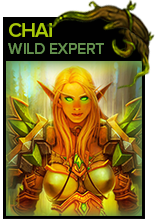
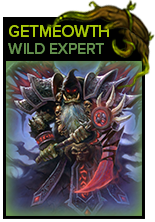
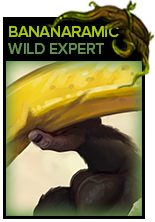
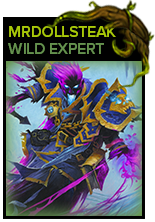
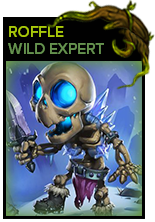
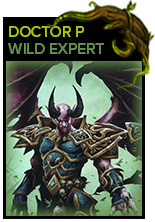
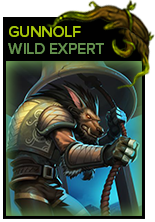
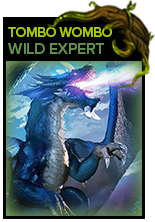



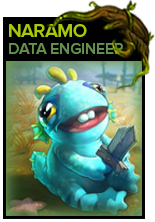

Nice
H1J0’s Evenlock deckcode is not Evenlock, but Cube.